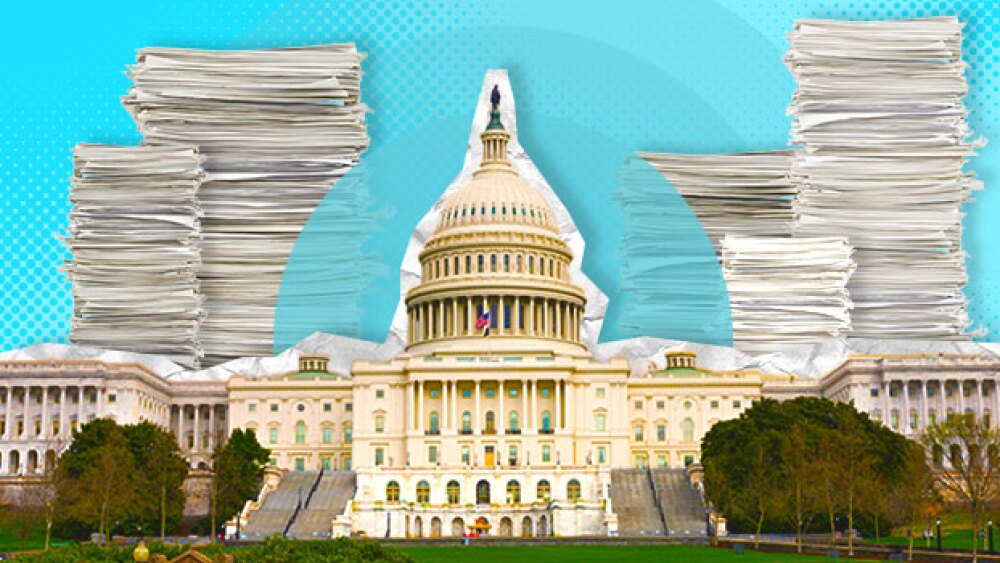The recent invalidation of an AAV gene therapy patent overlooks the complexity of innovation in biotechnology and could put a broad swath of intellectual property at risk.
Adeno-associated virus (AAV) gene therapy markets reached a combined value of $1.9 billion in 2023 and are forecasted to top $75.1 billion by 2034, Research and Markets reported in May. But a recent ruling by the Delaware District Court invalidating an AAV gene therapy patent threatens to undermine growth in the AAV gene therapy sector and in biotechnology more broadly. By siding with Sarepta in ruling that REGENXBIO’s technology was unpatentable on the grounds that it was not sufficiently different from a naturally occurring cell, the court has prescripted a significantly more challenging path to patent protection in the field, undercutting investment and the development of new medicines.
Continued innovation and growth in AAV gene therapy requires significant financial investment in research and development. The ability to protect and profit from innovations is a primary motivation for these substantial investments, as patent owners can recoup their investments by licensing their inventions to others or excluding others from using, making or selling them. As patent attorneys, we believe that the recent court ruling in REGENXBIO Inc. v. Sarepta Therapeutics, Inc. (REGENXBIO v. Sarepta) is based on flawed reasoning. REGENXBIO has appealed, but if upheld, this decision could put the biotechnology industry at risk.
The REGENXBIO v. Sarepta Ruling
On September 15, 2020, REGENXBIO Inc. (REGENXBIO) and the University of Pennsylvania (which owns the patent-at-issue and licenses the patent to REGENXBIO) filed a lawsuit in the Delaware District Court against Sarepta Therapeutics, Inc. and Sarepta Therapeutics Three, LLC (Sarepta), alleging Sarepta’s infringement of U.S. Patent No. 10,526,617 (the ’617 patent), an AAV gene therapy patent. The claims of the ’617 patent protect a cultured host cell that contains a recombinant nucleic acid molecule encoding a naturally occurring (or sufficiently related) AAV sequence and a heterologous non-AAV sequence.
On January 5, 2024, the Delaware District Court found key claims of the ’617 patent invalid for lack of patent eligibility under Section 101 of the Patent Act.
Section 101 of the Patent Act sets forth the four types of inventions that are patentable under U.S. law, namely, “new and useful” processes, machines, manufactures and compositions of matter, “or any new and useful improvement thereof.” Courts have interpreted Section 101 as preventing the following categories of inventions from being patented in the U.S.: laws of nature, natural phenomena and abstract ideas.
The building blocks of scientific and technological work—like scientific principles, mental processes, naturally occurring phenomena and mathematical algorithms—are therefore, themselves, ineligible for patents. They can, however, be granted patent protection when they are combined with other elements that transform their nature into patent-eligible subject matter. This ability to transform something that is typically ineligible for patent protection into patent eligible subject matter is what is at issue in REGENXBIO v. Sarepta.
Section 101 is and should continue to be a low bar to patentability, one that is readily cleared via transformative processes that use natural components to make new, non-natural compositions. This notion underpinned the Supreme Court’s 1980 ruling in the seminal biotechnology patent case Diamond v. Chakrabarty (Chakrabarty). In Chakrabarty, the court found lab‑made bacteria to be patent eligible because the bacteria had been genetically engineered to have the capacity to break down components of crude oil.
As was the case with the patent at issue in Chakrabarty, the ’617 patent uses genetic engineering to manipulate a target host cell so it is transformed to harbor an AAV construct. This is precisely the type of invention that Section 101 of the Patent Act was designed to protect. In our opinion and that of many other intellectual property and biotech professionals, the court’s holding in REGENXBIO v. Sarepta reflects its lack of appreciation for the transformation required to create genetically engineered host cells, as also demonstrated by its reliance on inapposite legal precedents.
An Inapplicable Precedent
The Delaware District Court’s opinion relied heavily on the Supreme Court’s 1948 decision in Funk Brothers Seed Co. v. Kalo Inoculant Co. The patent at issue in Funk Brothers described a process requiring nothing more than combining various species of a genus of naturally occurring bacteria to create a mixed culture. Likening the claims of the ’617 patent to those at issue in Funk Brothers, the court found that “[t]aking ‘two sequences from two different organisms and put[ting] them together’ is no different than taking two strains of bacteria and mixing them together.”
This oversimplification evinces a lack of appreciation for the fact that the creation of the invention claimed in the ’617 patent required both the making of a new recombinant nucleic acid molecule via covalent bonding of distinct sequences (even if both component sequences were naturally occurring) and overcoming over 3 billion years of host cell evolution that has resisted the introduction of external nucleic acid sequences. That the process of inserting genetic constructs into target host cells has now become relatively routine does not render inventions that are created using this process any less transformative—or, quite frankly, amazing—as technological advances.
An Appeal to Watch
Many biotechnological innovations involve making combinations of or tweaks to naturally occurring genes, cells or other components of life. Therefore, if the Delaware District Court’s ruling is upheld and applied by courts more broadly, many biotherapeutics will be at risk of invalidation under Section 101. As a result, continued innovation in biotherapeutics would be threatened for want of investment in the sector. Fortunately, REGENXBIO and UPenn filed a notice of appeal with the Federal Circuit Court of Appeals (the only federal appellate court with jurisdiction to hear patent disputes) on January 12, 2024.
Recognizing the significant threat that the Delaware District Court’s ruling poses, legal and biotech professionals have rallied to urge a reversal of the ruling. The Parker Institute for Cancer Immunotherapy, the J. David Gladstone Institutes, Dana-Farber Cancer Institute, the Honorable Paul R. Michel (former Chief Judge of the Federal Circuit) and the American Intellectual Property Law Association have all filed amicus briefs in support of a reversal.
REGENXBIO and UPenn’s opening appellate brief and Sarepta’s responding brief have already been filed, and REGENXBIO and UPenn’s reply brief is due for filing on August 29. Given the wide implications of the court’s order for gene therapy inventions and the patent protection thereof, interested parties will undoubtedly be monitoring the Federal Circuit’s review of the appeal and, if the Delaware District Court’s ruling is upheld, analyzing the impact on their existing patent portfolios and ongoing research and development of gene therapies.









